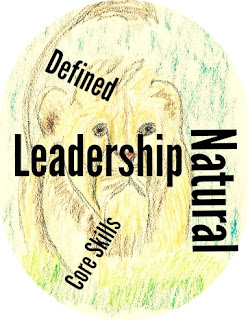It would be great if we had a handbook for every business problem and issue we face. We just open the book and come up with a solution. Life isn't like that and there is no management by the numbers system. We must work our way through problems and come to conclusions that can have a big impact on how successful we are. This means we need to use some type of mental approach that helps to ensure we are coming to proper management conclusions.
Consider how many decisions are made in the business world-and they don't always have anything to do with rationality or strategy. Decisions can be reactive, emotional, social, quick and inaccurate that leads to poor outcomes. By looking through our experience, relevant theories, using critical thinking and checking in with our emotions we are better able to determine the best strategic course of action.
Paint 1: The Benefits of Experience
There is no substitute for experience. Theory is excellent but experience is often more practical for solving problems at the times they rear their ugly head. Seasoned managers can bring time tested methods to overcoming challenges by drawing on their wide experiences. They are limited by the new ways of seeing and doing things that can lead to innovative breakthroughs.
Paint 2: The Benefits of Theory
Theory is the scientific explanation for events that rests on multiple incidents of experience. Theories become stronger when additional support is provided through shared findings from different times and places. Theories can help business predict what will happen when factors XYZ are in place. They are good for developing new strategies based on theoretical models.
Paint 3: The Benefits of Critical Thinking
Critical thinking can balance out theory and experience to help explore new solutions yet undiscovered. When scanning our neural networks for possible solutions we can start to see possibilities from varying perspectives and angles. As we critically review the most likely solutions we engage in critical thinking. Our strategic choices are adequately explored.
Paint 4: The Benefits of Feeling
Check in with how you feel about a looming big decision. If you feel that your choice is not ethical or won't have the intended outcomes then go back and recheck your steps. Sometimes our subconscious knows things that we are not willing to accept. It just doesn't feel like the right decision but we might be unaware of why. Go exploring to see if there is anyway to improve the choice.
Fell free to share with appropriate attribution. Dr. Murad Abel http://www.academic-capital.net
The blog discusses current affairs and development of national economic and social health through unique idea generation. Consider the blog a type of thought experiment where ideas are generated to be pondered but should never be considered definitive as a final conclusion. It is just a pathway to understanding and one may equally reject as accept ideas as theoretical dribble. New perspectives, new opportunities, for a new generation. “The price of freedom is eternal vigilance.”—Thomas Jefferson
Thursday, March 17, 2016
Tuesday, March 15, 2016
Life Ain't Complicated!
Its true! Keep it simple and stay focused.
Fell free to share with appropriate attribution. http://www.muradart.com
Fell free to share with appropriate attribution. http://www.muradart.com
Monday, March 14, 2016
Helping Executives Beat the Boardroom Battles
Business is tough can can take a toll on your psychological and physical health. The middle aged corporate man with the bulging stomach, high cholesterol, and stressed disposition is something real and common that can come with eventual consequences. Getting involved in activities like boxing can help in balancing a lopsided lifestyle.
Successful people sometimes get into a rut. They find one way to compete and then continue to use that same way method over and over. As long as the behavior is successful then the person will continue to be successful. The problem is that things change.
Workplaces change, people change and the market changes. This means that executives must always be on alert for opportunities, willing to change, and constantly engaged in pushing good ideas forward. At times the boardroom can look more like a battle ground then a place where civilized people engage in productive work. All of this change adds up to toxic stress!
One of the best ways to get rid of stress is to punching it out! Punch your pillows, punch a bag, or engage in some heavy duty cardio work. Joining your local boxing gym gives you an outlet for your aggression, helps you to connect with other people, and get in shape to be more resilient in the future. It is a great way to fatigue the body and reduce anxiety.
Boxing and its cousins like kickboxing, MMA, karate, and other self-defense classes have high cardo workouts built into them. This means you will lose weight quickly, strengthen your muscles, and feel better about yourself in little time. In as little as a month you will find our body adjusting and changing physically and psychologically in a way that makes you more confident the next time you engage in a boardroom battle.
Fell free to share with appropriate attribution. Dr. Murad Abel http://www.academic-capital.net
Successful people sometimes get into a rut. They find one way to compete and then continue to use that same way method over and over. As long as the behavior is successful then the person will continue to be successful. The problem is that things change.
Workplaces change, people change and the market changes. This means that executives must always be on alert for opportunities, willing to change, and constantly engaged in pushing good ideas forward. At times the boardroom can look more like a battle ground then a place where civilized people engage in productive work. All of this change adds up to toxic stress!
One of the best ways to get rid of stress is to punching it out! Punch your pillows, punch a bag, or engage in some heavy duty cardio work. Joining your local boxing gym gives you an outlet for your aggression, helps you to connect with other people, and get in shape to be more resilient in the future. It is a great way to fatigue the body and reduce anxiety.
Boxing and its cousins like kickboxing, MMA, karate, and other self-defense classes have high cardo workouts built into them. This means you will lose weight quickly, strengthen your muscles, and feel better about yourself in little time. In as little as a month you will find our body adjusting and changing physically and psychologically in a way that makes you more confident the next time you engage in a boardroom battle.
Fell free to share with appropriate attribution. Dr. Murad Abel http://www.academic-capital.net
Saturday, March 12, 2016
Leading from Your Genuine Self
Leadership gives the populace direction and helps them find meaning in their lives. Social development and adaptation needs strong leaders to be successful. Faced with challenges leaders will need to find solutions and motivate people. Developing leadership skills doesn't have any pre-defined rules and can be drawn from one's core strengths.
We must not put leadership into a pre-defined bottle where only a small sliver of actions are considered leadership. We are limited by our social perspectives and cultures. Leadership is about finding your core strengths and using those core strengths to help people get over challenges.
Misleading Perceptions of Leadership
Society has their own perceptions of leadership, gender and culture that often get in the way of how people express leadership. We are bombarded with the idea that leadership looks like Caesar and his conquering army. Although this is one type of leadership there are many more that have made profound changes on society that include types such as servant and knowledge based leadership styles.
Leadership is occurs when new solutions to problems are created and people are motivated to achieve new heights. Caesar's style might work in a military situation but could be disastrous in other situations that require more tact. True leadership can emerge in nearly any field and situation whereby a person stands to create positive change that benefits a greater good.
Not Tapping Your Full Potential
Perceiving leadership through a narrow lens means that the world is cutting itself from potential leaders. Consider how spiritual leaders like Gandhi changed a country or how scientific leaders like Einstein inspired generations of intellectuals. Each person has unique potential to lead in their own way once they get through the layers of socialized misconceptions and tap into their true potential.
People are not the same and their leadership style might be different as well. Some are more analytical while others are more intuitive in their approaches. Giving up preconceived notions of leadership might open you up to accepting your own personal style and maximizing your leadership potential.
Knowing Yourself
True leaders have insight into themselves and others. They learn from their experiences and use that knowledge to enhance their environment. Sometimes that knowledge comes from themselves while at other times it comes from watching others.
Taking time to understand what motivates you, the skills you have already developed and the abilities that come naturally to you will make a difference in how you approach issues. Instead trying to tackle problems and lead others from a disadvantage you can use your true abilities to lead from a position of power.
Lead from Your Core
Genuine leadership rests on leading from your truth strengths and abilities. You become a natural leader and leadership becomes easier when you tap into your inner sole and intuitively know your strengths. When leading from your core there is no need to envision what other leaders would do or compare yourself to other people because you are natural.
Sustainable leadership must come for you true self if it is going to be fully effective. When you need to perform at your maximum it is better to have automatic responses from your true self versus having to think through how leaders are supposed to act. The more your tap your inner, abilities the stronger you will become.
Fell free to share with appropriate attribution. Dr. Murad Abel http://www.academic-capital.net
We must not put leadership into a pre-defined bottle where only a small sliver of actions are considered leadership. We are limited by our social perspectives and cultures. Leadership is about finding your core strengths and using those core strengths to help people get over challenges.
Misleading Perceptions of Leadership
Society has their own perceptions of leadership, gender and culture that often get in the way of how people express leadership. We are bombarded with the idea that leadership looks like Caesar and his conquering army. Although this is one type of leadership there are many more that have made profound changes on society that include types such as servant and knowledge based leadership styles.
Leadership is occurs when new solutions to problems are created and people are motivated to achieve new heights. Caesar's style might work in a military situation but could be disastrous in other situations that require more tact. True leadership can emerge in nearly any field and situation whereby a person stands to create positive change that benefits a greater good.
Not Tapping Your Full Potential
Perceiving leadership through a narrow lens means that the world is cutting itself from potential leaders. Consider how spiritual leaders like Gandhi changed a country or how scientific leaders like Einstein inspired generations of intellectuals. Each person has unique potential to lead in their own way once they get through the layers of socialized misconceptions and tap into their true potential.
People are not the same and their leadership style might be different as well. Some are more analytical while others are more intuitive in their approaches. Giving up preconceived notions of leadership might open you up to accepting your own personal style and maximizing your leadership potential.
Knowing Yourself
True leaders have insight into themselves and others. They learn from their experiences and use that knowledge to enhance their environment. Sometimes that knowledge comes from themselves while at other times it comes from watching others.
Taking time to understand what motivates you, the skills you have already developed and the abilities that come naturally to you will make a difference in how you approach issues. Instead trying to tackle problems and lead others from a disadvantage you can use your true abilities to lead from a position of power.
Lead from Your Core
Genuine leadership rests on leading from your truth strengths and abilities. You become a natural leader and leadership becomes easier when you tap into your inner sole and intuitively know your strengths. When leading from your core there is no need to envision what other leaders would do or compare yourself to other people because you are natural.
Sustainable leadership must come for you true self if it is going to be fully effective. When you need to perform at your maximum it is better to have automatic responses from your true self versus having to think through how leaders are supposed to act. The more your tap your inner, abilities the stronger you will become.
Fell free to share with appropriate attribution. Dr. Murad Abel http://www.academic-capital.net
Wednesday, March 9, 2016
Is Stimulus the Right Response to Global Slowdowns?
The world economy is at risk of recession. According to the OECD growth in the G7 is slowing and without immediate action it is difficult to move from the low growth stages back to prosperity. "Economic derailment" is seen as just around the corner unless nations act now. Their recommendation is to provide costly economic stimulus to turn the tide but may not be using the right tools.
Is stimulus the right approach?
IMF indicates rising risks to global economy putting European nations, and the world at large, in a slower growth mode. Problems in the U.S. are related to age-related spending and infrastructure needs. Direct stimulus is seen as one of the only tools to improve the economy.
The problem is that stimulus is a short-term growth strategy that comes with long term costs. As stimulus improves economic activity it also erodes the natural competitive nature of firms to adjust to new market realities. The stimulus becomes a focal point for short-term corporate investment but doesn't necessarily return the investment money to tax payers or improve market fundamentals.
Is there a long-term cost to stimulus?
A few years down the road we are in the same, or worse, position as now because we only received short-term gains with lots of debt.
The pathological need to spend and incur debt is what got us in this situation in the first place. Europe is known for taking on large liabilities making business prohibitive resulting in pushing investors into foreign markets where costs and barriers are lower. The U.S.must avoid this path as costs rises and infrastructure weakens.
Is there stimulus with long-term benefits?
Improving infrastructure focuses on fundamental aspects of the economy in a way that reduces the overall costs of conducting business. Investing in infrastructure works like a stimulus in the sense that it improves short-term business associated with construction but also has the ability to improve upon the economy as a whole. As the cost business transactions (moving and buying goods) decrease economic activity increases.
Infrastructure also impacts multiple industries equally. Consider the implementation of fiber optic cables in a city. It would impact all of the businesses, governments, colleges, and households that connect to it. Information speeds and reduces the costs of transactions thereby improving development opportunities. The same idea applies to roads, airports, docks, and utilities.
Why we waste money on low return projects?
Politics influences how we spend and where we spend taxpayer money. Businesses socialize with and seek to influence where money is spent. In many cases it is put back into political supporter coffins and have little or no benefit for the American population. Ensuring money is spent for maximum return on those areas that have the greatest impact. This means making decisions based on data, science and logic over the need to make decisions for friends and political maneuvering.
Fell free to share with appropriate attribution. Dr. Murad Abel http://www.academic-capital.net
Is stimulus the right approach?
IMF indicates rising risks to global economy putting European nations, and the world at large, in a slower growth mode. Problems in the U.S. are related to age-related spending and infrastructure needs. Direct stimulus is seen as one of the only tools to improve the economy.
The problem is that stimulus is a short-term growth strategy that comes with long term costs. As stimulus improves economic activity it also erodes the natural competitive nature of firms to adjust to new market realities. The stimulus becomes a focal point for short-term corporate investment but doesn't necessarily return the investment money to tax payers or improve market fundamentals.
Is there a long-term cost to stimulus?
A few years down the road we are in the same, or worse, position as now because we only received short-term gains with lots of debt.
The pathological need to spend and incur debt is what got us in this situation in the first place. Europe is known for taking on large liabilities making business prohibitive resulting in pushing investors into foreign markets where costs and barriers are lower. The U.S.must avoid this path as costs rises and infrastructure weakens.
Is there stimulus with long-term benefits?
Improving infrastructure focuses on fundamental aspects of the economy in a way that reduces the overall costs of conducting business. Investing in infrastructure works like a stimulus in the sense that it improves short-term business associated with construction but also has the ability to improve upon the economy as a whole. As the cost business transactions (moving and buying goods) decrease economic activity increases.
Infrastructure also impacts multiple industries equally. Consider the implementation of fiber optic cables in a city. It would impact all of the businesses, governments, colleges, and households that connect to it. Information speeds and reduces the costs of transactions thereby improving development opportunities. The same idea applies to roads, airports, docks, and utilities.
Why we waste money on low return projects?
Politics influences how we spend and where we spend taxpayer money. Businesses socialize with and seek to influence where money is spent. In many cases it is put back into political supporter coffins and have little or no benefit for the American population. Ensuring money is spent for maximum return on those areas that have the greatest impact. This means making decisions based on data, science and logic over the need to make decisions for friends and political maneuvering.
Fell free to share with appropriate attribution. Dr. Murad Abel http://www.academic-capital.net
Tuesday, March 8, 2016
Minimizing Firm Transaction Cost
Ronald Coase in his landmark 1937 paper The Nature of the Firm believed that all businesses are defined by their transactions. According to his Theory of the Firm people form and establish businesses because they can build and create products cheaper than contracting out the work or doing so on the open market. Firms become a way of reducing transaction costs and improving production capacity.
Firms are tightly bound networks of internal transactions. The size of the firm can be determined by how many transactions exist within the confines of the firm. As firms get large they also become more inefficient because the transaction costs rise making creation more advantageous in other entities.
Transaction costs are associated with 1. Search and information, 2. Bargaining and decision costs, and 3. Policing and enforcement costs.
Firms are tightly bound networks of internal transactions. The size of the firm can be determined by how many transactions exist within the confines of the firm. As firms get large they also become more inefficient because the transaction costs rise making creation more advantageous in other entities.
Transaction costs are associated with 1. Search and information, 2. Bargaining and decision costs, and 3. Policing and enforcement costs.
Firms are at their essence long-term contracts that form when short-term contracts are no longer advantageous. As "Islands of consciousness" the transaction costs within tightly connected firms make them more efficient when compared to outside its walls. As long as it is more advantageous for entrepreneurs to create products and services from inside the firm it will continue to grow.
Coase believed that without understanding transaction costs it is impossible to create sound economic policies. High level overviews of the economy are great but without understanding the inner workings of how information, goods, and services move it is impossible to set policy in a way that improves business fundamentals. Policy often misses the mark because it doesn't integrate into the daily micro actions of the firm.
Consider a policy that helps support a budding industry a nation needs to compete internationally. The policy doesn't consider the lost revenue of inter and intra-firm transactions that make it possible for those firms to compete. It may be more beneficial to develop policies that help firms improve their internal operational transactions and work within clusters to ensure maximum development based on their natural capacities emerges.
I view the internal workings of firms as one tight layer of efficient transactions that rest on industry knowledge. Firms exist together in clusters because they share the same needs for resources and intellectual capital. The stronger and longer the firms exist in a cluster the more efficient the cluster becomes as entrepreneurs seek to modify their environment to create more profits. Hubs are a collection of clusters that share similarities in knowledge and environment whereby advancement in one industry lends to the advancement in another (i.e. telecommunications and Navy).
I view the internal workings of firms as one tight layer of efficient transactions that rest on industry knowledge. Firms exist together in clusters because they share the same needs for resources and intellectual capital. The stronger and longer the firms exist in a cluster the more efficient the cluster becomes as entrepreneurs seek to modify their environment to create more profits. Hubs are a collection of clusters that share similarities in knowledge and environment whereby advancement in one industry lends to the advancement in another (i.e. telecommunications and Navy).
Coase, R. (1937) The nature of the firm. Economica, 4 (16).
Fell free to share with appropriate attribution. Dr. Murad Abel http://www.academic-capital.net
Fell free to share with appropriate attribution. Dr. Murad Abel http://www.academic-capital.net
Wednesday, March 2, 2016
Are Leaderless Organizations Coming Soon?
Wouldn't it be great if you didn't have a boss? Maybe not a boss in the entire workplace! Leaderless organizations are making that possible by offering communal based work for highly skilled and self-motivated professionals. Instead of the rigid hierarchy that slows down production and increases transaction costs a flatter and more employee centered approach is used where management is taken over by panels and teams.
Leaderless organizations are more common in industries that require lots of innovation and change to keep up with the market. Highly skilled professionals that have a sense of self-direction are likely to fit well within they structures framework. As the trend to push flatter and more virtual takes shape the need for a traditional boss lessens.
Self-Directed Workforce
The self-directed workforce operates from a communal perspective that each person has value within the organization and must contribute based on their unique function. There is organizational structure and expectations but there isn't heavy layers of management-in some cases there may be no layers of management. It is a system that is designed like a cell where all parts must work together for survival.
Self-directed doesn't mean there is no direction it means that the sole direction is based on the organizational objectives and the specific functions of people within the company. Once the overriding goals of the organization are developed it is then up to each member to align their activities through their daily work functions. No one needs to force these goals as they are universally accepted.
Decentralized Workplace
Decentralized workplaces are based on collaboration. People believe they are part of a bigger function and are professional enough to self-direct their daily work. They don't need a boss telling them what to do everyday or strict oversight. Their internal motivation and commitment to their field and their organization keeps them on track.
Traditional functions of management such as hiring, firing, compensation, and discipline become the domain of mutual consensus. Members decide these issues in collaboration that lowers the bias that a single manager may have. The company makes employment decisions and workplace decisions based on the needs of the organization and the functional capacity of their positions.
Strong Social Expectations
Social expectations help provide direction even when there isn't a manager available to give them. It can be argued the social expectations are even more important than other types of expectations due to the powerful influence rejection can have. These expectations are group based and are reinforced informally and formally.
In order for social expectations to have power they will need to have symbols and values that support strong performance. This occurs when the organization and work groups create an identity of what they believe as codified in stories, culture, history, symbols, and challenges. Each person shares a level of cognition with others in the workplace.
Leaderless organizations are more common in industries that require lots of innovation and change to keep up with the market. Highly skilled professionals that have a sense of self-direction are likely to fit well within they structures framework. As the trend to push flatter and more virtual takes shape the need for a traditional boss lessens.
Self-Directed Workforce
The self-directed workforce operates from a communal perspective that each person has value within the organization and must contribute based on their unique function. There is organizational structure and expectations but there isn't heavy layers of management-in some cases there may be no layers of management. It is a system that is designed like a cell where all parts must work together for survival.
Self-directed doesn't mean there is no direction it means that the sole direction is based on the organizational objectives and the specific functions of people within the company. Once the overriding goals of the organization are developed it is then up to each member to align their activities through their daily work functions. No one needs to force these goals as they are universally accepted.
Decentralized Workplace
Decentralized workplaces are based on collaboration. People believe they are part of a bigger function and are professional enough to self-direct their daily work. They don't need a boss telling them what to do everyday or strict oversight. Their internal motivation and commitment to their field and their organization keeps them on track.
Traditional functions of management such as hiring, firing, compensation, and discipline become the domain of mutual consensus. Members decide these issues in collaboration that lowers the bias that a single manager may have. The company makes employment decisions and workplace decisions based on the needs of the organization and the functional capacity of their positions.
Strong Social Expectations
Social expectations help provide direction even when there isn't a manager available to give them. It can be argued the social expectations are even more important than other types of expectations due to the powerful influence rejection can have. These expectations are group based and are reinforced informally and formally.
In order for social expectations to have power they will need to have symbols and values that support strong performance. This occurs when the organization and work groups create an identity of what they believe as codified in stories, culture, history, symbols, and challenges. Each person shares a level of cognition with others in the workplace.
Subscribe to:
Posts (Atom)




